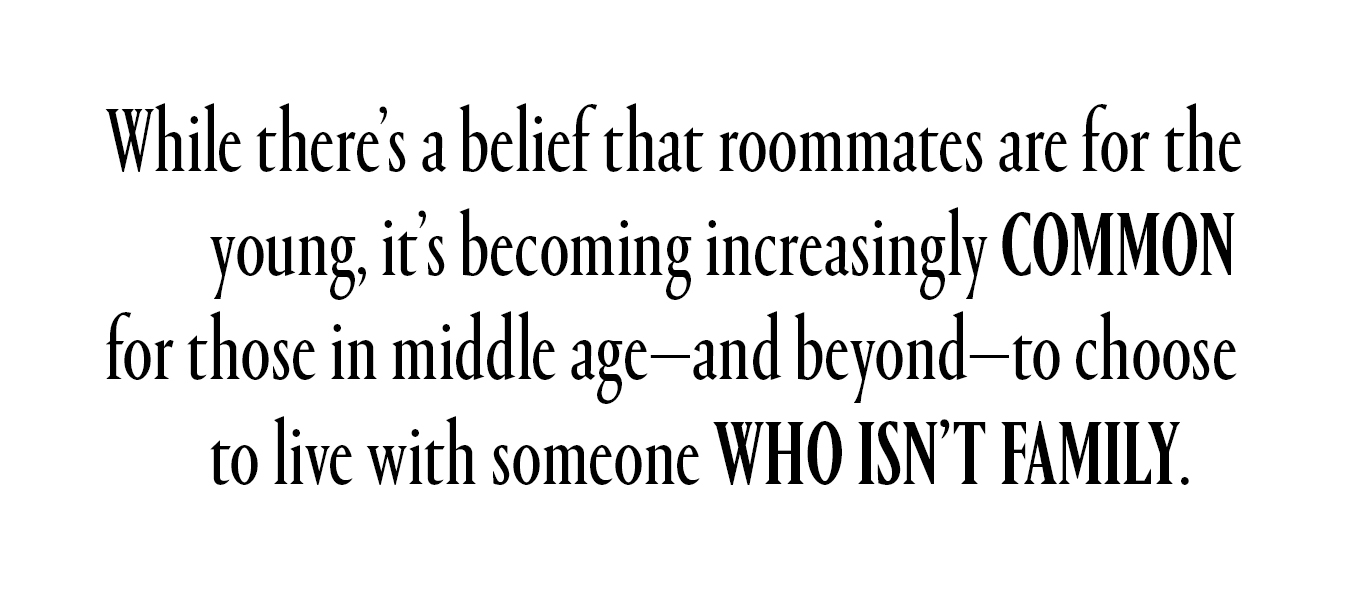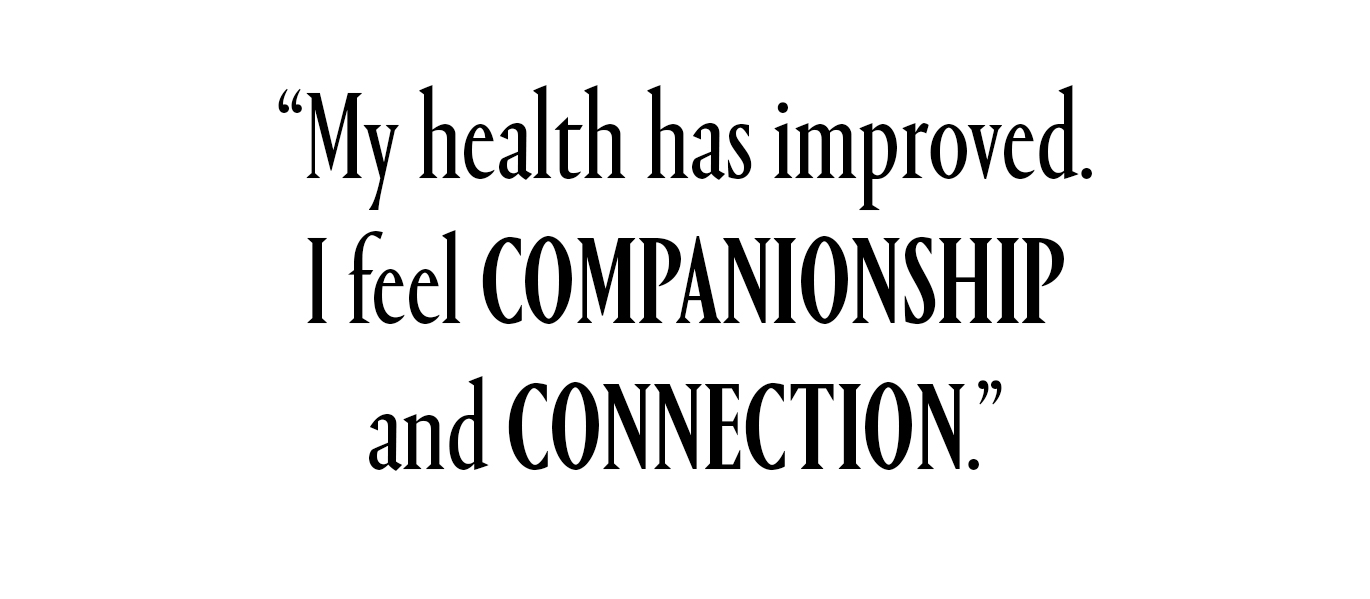
When I moved to the San Francisco Bay Area in my 20s, I rented a room from a couple in a two-bedroom apartment. The space had big windows, purple walls, and soft pink carpets. On the other end of the apartment lived Tracy* and Andy. They were practically a cliche: both worked in tech, loved silent discos, and hung with a Burning Man crowd. They were also in their early 50s, and used my rent to subsidize a rental home on the California coast, where they enjoyed spending time.
Despite the age gap, the arrangement worked. I didn’t mind the AARP advertisements that showed up in the mail. Andy didn’t mind giving me career advice, including how to negotiate a promotion in my underpaying journalism job.
That was years ago. When I called and spoke to Tracy recently, she told me that the spare room was currently sitting empty—but perhaps not for long. Their finances had changed. Tracy decided to leave her job at a credit card company to pursue her lesser-paying passion: being a clairvoyant. To help bolster her reduced income, they're considering finding a roommate again, this time through a traveling nurse program she heard about from a friend. The extra money would help, but having someone around is also just nice. “I like my space, and I like to share it,” she tells me.
While there’s a belief that roommates are for the young, it’s becoming increasingly common for those in middle age—and beyond—to choose to live with someone who isn’t family. According to a report from Harvard University’s Joint Center for Housing Studies, nearly one million older adults in the U.S. have roommates, a number that has nearly doubled over the past 18 years.
That this is overlooked is perhaps, in part, intentional. Getting roommates is a rite of passage for adolescents; losing them is a rite of passage into adulthood. Solo living, especially in cities, is aspirational; it communicates a degree of self-reliance and financial stability. But while middle-age money problems may come with a stigma, they’re normal—and not always a marker of poor financial planning.
As they say, in this economy, buying a house, or even coughing up a rent payment, is no longer viable for many. Unaffordable housing feels like a tenet of American life, and that isn’t unique to Millennials or Gen Z. The average sales price of a new single-family home in the United States is $488,900, according to the United States Census Bureau and Department of Housing and Urban Development. In some places, like California, that number nearly doubles. The latest U.S. National Home Price Index, released in December, shows that the price of homes continues to rise. Meanwhile: while mortgage rates have dropped they are still relatively high, incomes haven’t kept up with the cost of living, everything is expensive. And the crippling costs we often associate with younger generations, like the price of college tuition, impacts The Olds, too, many of whom are paying for their children to go to school.

It started off as a financial boon for Allison Cook. The 57-year-old has lived in her four-bedroom house in Boston’s Jamaica Plain neighborhood for 30 years. She began renting her current home in the early ‘90s, eventually purchasing it for about $200,000 with her then-husband. In 2012, after her divorce and her only daughter’s departure for the University of Vermont, Cook started looking for roommates to defray costs.
She found that her two-story house was conducive to guests. Nestled along the slope of a hill, the home resembles a wooden ship with its hidden nooks primed for reading or napping. Cook has privacy—the sanctuary of her bedroom converted out of a garret—and so do her housemates.
Over the years, Cook has had 16 roommates, whom she often refers to by nickname: Hannah the Baker, Connor the Sculptor, Anne from Copenhagen. She recalls playing cards until late at night on a double date with a former roommate. Sharing a Clinique lipstick with another. Telling one that her collection of driftwood was becoming a safety hazard. There was that time her housemate took too many edibles.
Many of the roommates have been international students attending one of Boston’s many universities or colleges; Cook’s found most of them via Craigslist, Airbnb, or word of mouth. She gravitates towards intellectuals: “I don’t feel like they need to occupy much [physical] space. They have space in their head.” The $900 monthly rent, while substantial, is a third of the average price for a one-bedroom in Boston. This supplements Cook’s income from an art and furniture restoration studio, where she estimates pricing for customers trying to restore their favorite things.
But for Cook, and others, there are benefits to having a roommate that go beyond the money. Middle age can be a sea change: marriages end, kids grow up and move out, careers shift or sputter. It can be lonely, and is only compounded by the long-held assumption that one must power through it alone—or find a romantic partner. Roommates can be a welcome balm to that malaise.
When a roommate hosted a party at Cook’s house, she took the backseat. “I kind of liked just being an attendant,” she says, “I like someone else enjoying the space and not feeling responsible for it.” The experience also feels deeply meaningful, she adds. “I like learning from people. I think it’s this notion of solidarity with the human race.”
For some, the advantages are even greater. Linda Williams lives with housemates at the beach in Sarasota, Florida. Something she’s done for the past 17 years.
She’s 76.
Since starting house sharing, Williams says her quality of life has improved. “I have more to look forward to,” she says. “My health has improved. I feel companionship and connection.” Plus, the extra money helps. Williams says she uses her savings for preventative medical services, like massages and acupuncture treatments, and can go on vacation without feeling the pinch.

Finding the right roommate can be complicated no matter your age, but for older adults, that can prove especially true. By midlife, most people have established routines, and often potential roomies are decades younger, which can create a natural divide.
This was something Gale, 71, who owns a three-bedroom house in Los Angeles has encountered. She’s had eight roommates over the last 10 years, charging them a rate of $800 to $1,000 a month. It all started with a friend of her son’s, who wrote asking if she could stay in one of Gale’s spare bedrooms. “We were real roommates,” she says. “The friendship sort of shifted from my son to me.” The pair even went on a Serbian diet together, which involved trying complicated recipes and unusual meal replacements, like red wine for lunch.
When she moved out, Gale stayed the course; she needed the money. But she made the mistake of posting for roommates on Craigslist. A musician looking for a crash pad wandered in. It wasn’t a fit.
To be fair, Gale doesn’t consider herself a great roommate, either. “There’s a lot of clutter,” she says. Most points of friction come down to the refrigerator. Gale abides by the one-a-week grocery shop while her Millennial housemates fill the fridge with styrofoam takeout. COVID was also a stressor: her then-roommate still worked in-person, meanwhile Gale was more isolated. And at times, she feels unsure about her living arrangement. Now that she’s retired, she’s home more, and her family comes over for weekly visits. “It’s not like I’m going to ask my roommate for permission to have my grandkids over,” she says.

To help ease roommate drama, a cottage industry of matchmaking services has emerged to pair compatible homeowners with home seekers. Jayne Ehrlich—who calls herself a Boomer-in-Chief—is working on one called Boomer Roomers. The goal of the service is to match Boomers and seniors from all socioeconomic demographics by housing preferences and lifestyle, so they can age in place together. Compatibility is based on a 25-question survey. “I've talked to so many people, some offering their homes and some needing homes,” says Ehrlich.
As Ehrlich sees it, the service isn’t just a nice-to-have, but a necessity: The amount of accessible, affordable housing is inadequate to support the fastest-growing homeless population: seniors. In Los Angeles, one of eight counties studied, nearly half of unhoused people are over 50.
By making it easier to find someone to shack up with, the chances of older adults being able to age in place also becomes a greater possibility. HomeShare Vermont, a non-profit organization, facilitates home sharing that matches homeowners with roommates who provide varying degrees of service, such as help with household chores, driving, and meal support, in exchange for affordable housing. “The data is very clear,” says Connor Timmons, the executive director of HomeShare Vermont. “Aging in place is a healthier choice. Individuals do better when aging in place. Neighborhoods do better. It’s an opportunity for people who still want to get everything they can out of life.”
Last year, the organization facilitated 70 matches in Vermont. In 2023, their homeshare applications increased by 35 percent. One of their clients, Marian Wright, 88, has hosted several housemates over the past year, including two teachers and a nurse working at a nearby retirement community. Wright had two housemates over the summer: a professor at a nearby college and an opera singer.
Wright first considered a roommate when her husband became sick and she was faced with the sudden prospect of living alone. “I’m hoping to stay in my home for as long as possible,” she says. “I’ve had it for almost 30 years. It’s filled with memories. It’s my family.”
She currently hosts an adjunct Middlebury College professor from Nepal, who pays $500 a month and helps Wright with cleaning and cooking. Wright says she greatly enjoys the company though she’s adjusting to her housemate’s aquarium, which now lives in the home, too. Some roommate dynamics, it seems, are evergreen.
*First names are being used to protect privacy.







